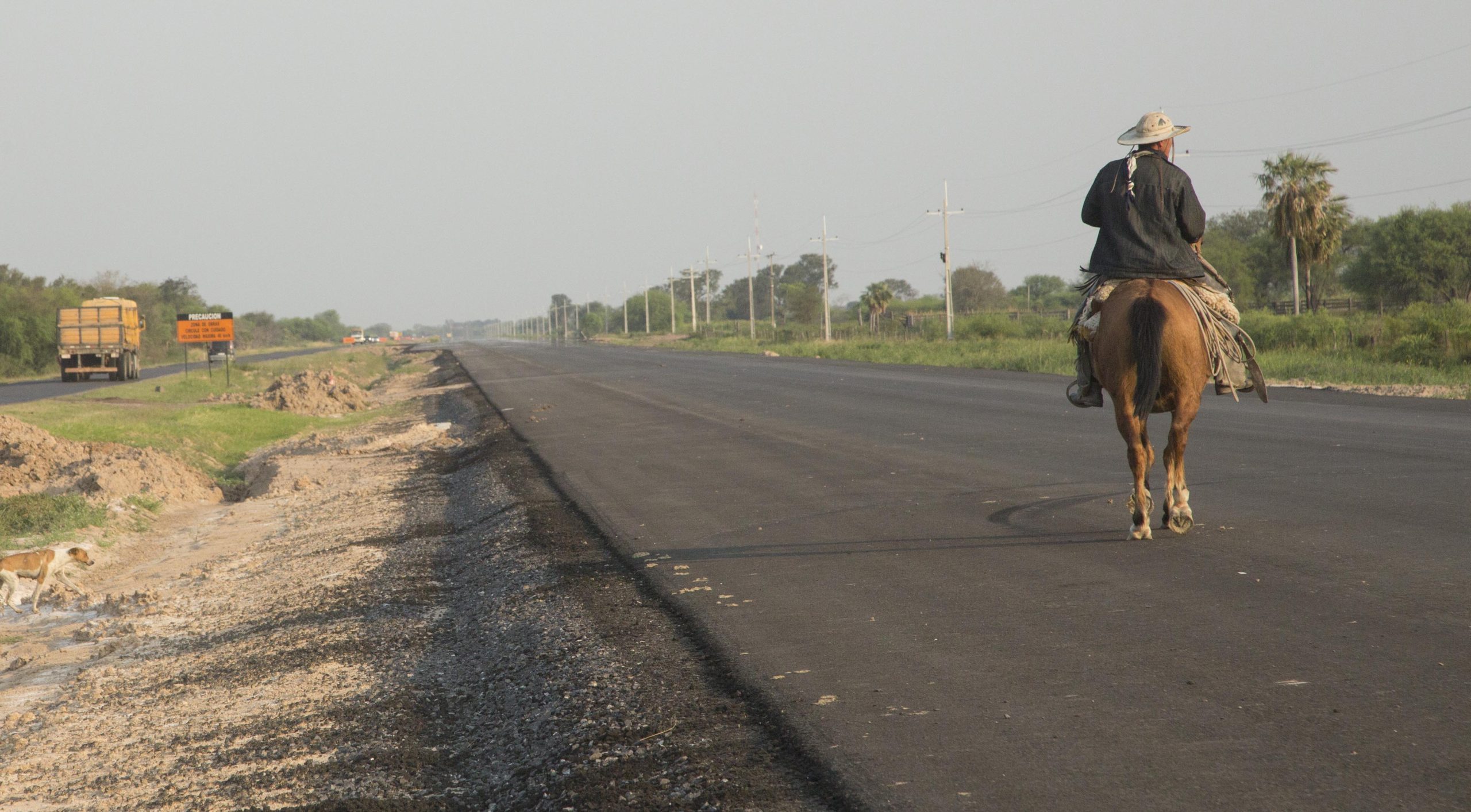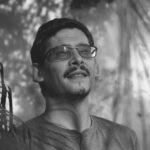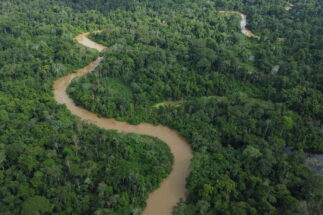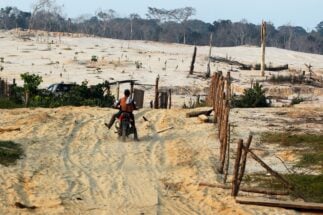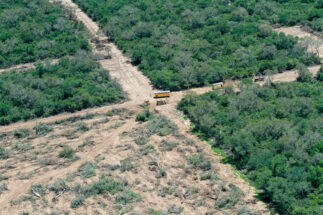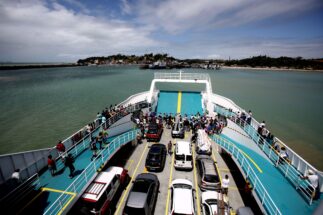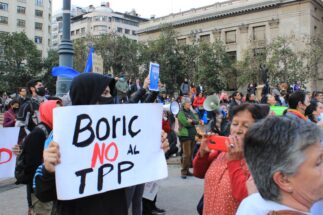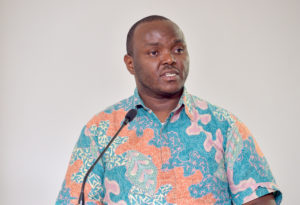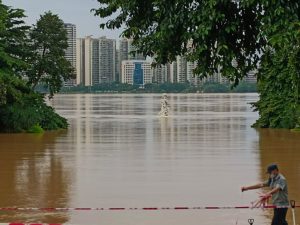Crows fly at dusk, as the car heads off the tarmac onto a dry dirt road crossed by small lizards and foxes. Puddles of rain and bushes flank the track, as well as cacti and young trees that hide the wire fence of a vast cattle farm. Obscured by the brush, it is impossible to see just how far the ranch stretches.
“This whole area has been deforested,” says Tagüide Picanerai, a leader of the Ayoreo indigenous people, as he drives to his community, Chaidí, in northern Paraguay. The name means “refuge” in his mother tongue. “Here you can see that they are clearing the small forests that were left. We know that this is killing biodiversity and, slowly, the Ayoreo world.”
Chaidí is a village of wooden houses surrounded by forest, one of the most untouched areas of the Gran Chaco – the second largest forest in South America after the Amazon, which connects to the Brazilian Pantanal, the world’s largest wetland.
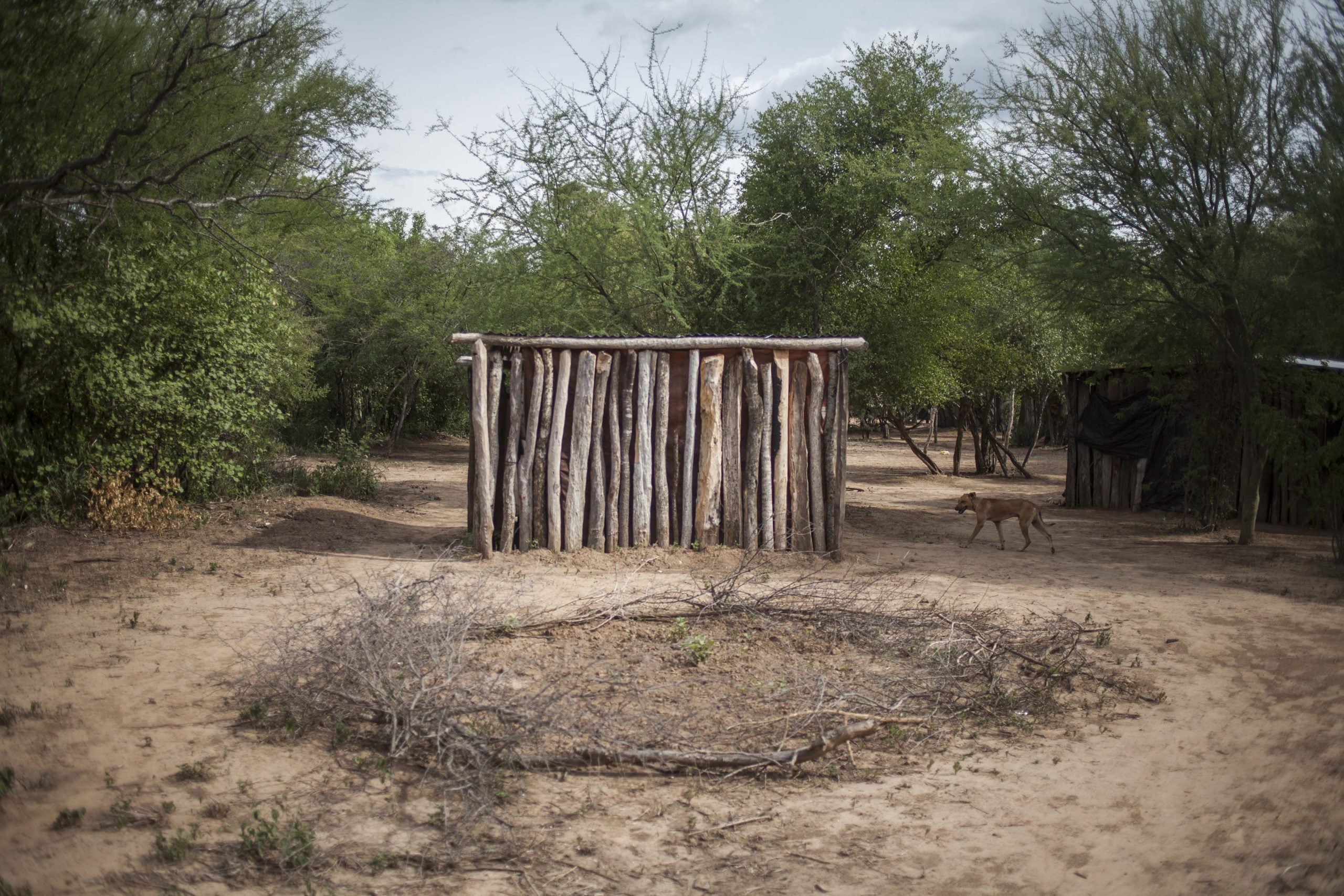
Picanerai is a native of this immense but lesser-known biome, partly arid and partly humid, and which, at a total area of 1.1 million square kilometres, occupies half of Paraguay, a third of Bolivia, a good chunk of Argentina and a little corner of Brazil. It is a territory twice the size of France.
The Ayoreo are the only people living in voluntary isolation in the Americas outside the Amazon basin. Their right to self-determination is enshrined in law by the Inter-American Commission on Human Rights, but they are one of the peoples most threatened and affected by deforestation, driven by large-scale agriculture and cattle ranching.
The Gran Chaco is in the midst of a transformation, and soon, a new road project could change it even more drastically.
The Bioceanic Corridor
Few are aware of the enormous cultural and natural wealth of this land; even fewer know of the project that is being carried out here.
An initiative known as the Bioceanic Corridor will see 544 km of asphalt laid down and a new bridge built between Brazil and Paraguay, to facilitate road traffic from one side of the continent to the other – a route that would also open up a new path to Asia.
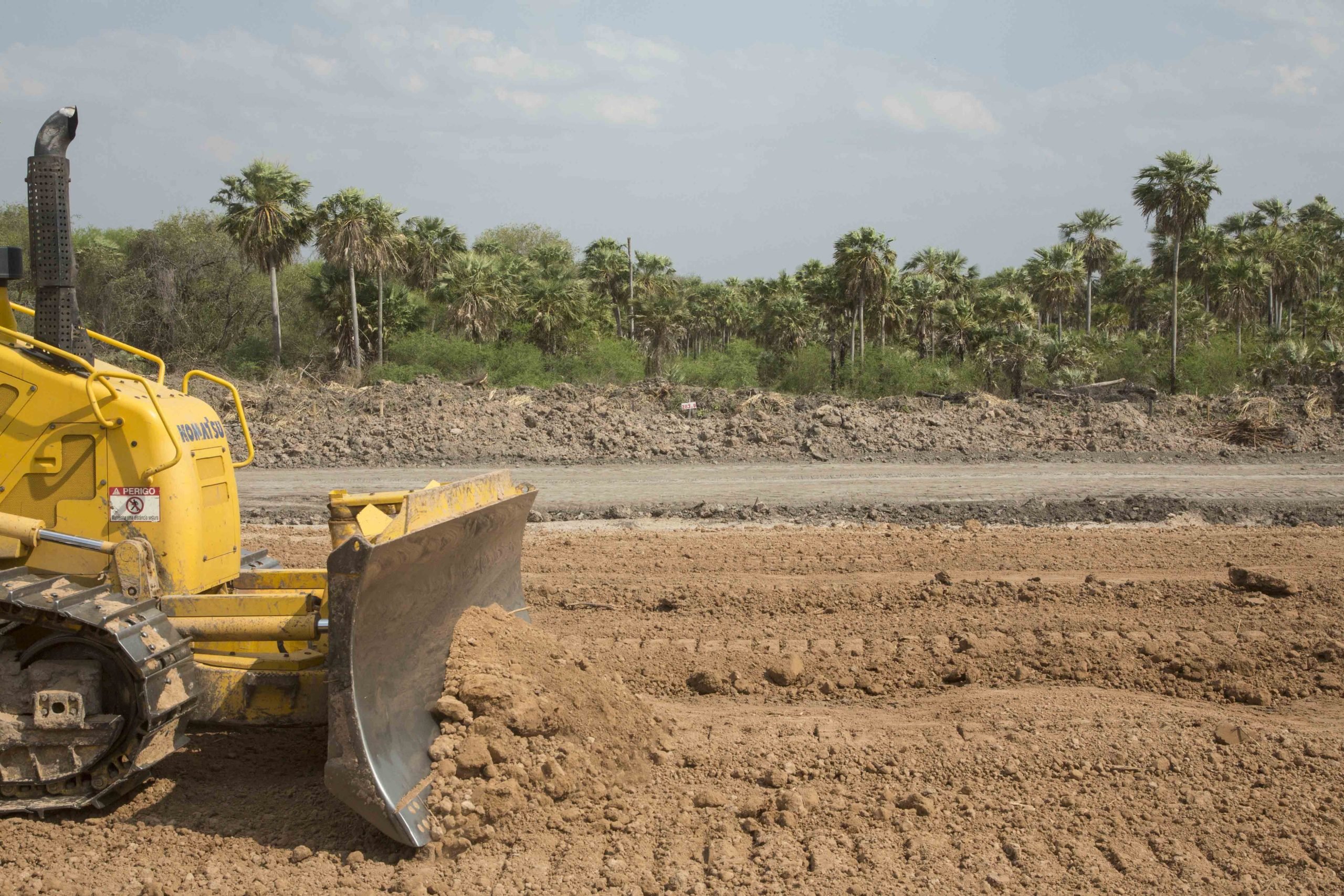
The soy producers of Brazil and cattle ranchers in Paraguay dream of reaching more Asian markets, crossing northern Argentina to arrive at Chile’s Pacific ports. Until now, passage along this route has been slow, dangerous and often held up along Paraguay’s dusty dirt roads.
Works on the new road are in full swing, advancing day after day. Almost all the way from the capital Asunción to the Ayoreo communities, trucks, tractors, bulldozers and hundreds of workers are digging, surfacing and painting.
Picanerai was born 34 years ago in Campo Loro, a settlement on the edge of the forest built in the 1970s by members of a controversial US evangelical mission now known as Ethnos360. They forced his parents out of the forest at gunpoint, and to abandon their nomadic life and customs. Picanerai says the missionaries named the place as it is because the men and women did not stop talking, like a loro – a parrot.

The total absence of asphalt in the Paraguayan area of the Gran Chaco, which borders Bolivia and Brazil, means the intensive trade in raw materials has so far been maintained by other routes. In early colonial literature, and from the 18th century onwards, the enormous difficulty of crossing the Chaco saw it dubbed a “green hell” or “desert”, noted for being “hostile”, “dry” and “arid”.
But while it may seem an impenetrable forest to outsiders, this is not the case for the many peoples whose ancestors were here long before the arrival of the Spanish.
A peculiar ecosystem
The Gran Chaco is a forest of palm trees, jaguars, cacti, thorns and anteaters; of caimans and pumas, and precious woods such as palo santo, the “holy stick”. Its vast area spans political borders to which nature pays no attention, and is divided into four ecoregions that, indeed, include arid and sometimes dry climates, but also forests, wetlands, steppes, rivers and lagoons.
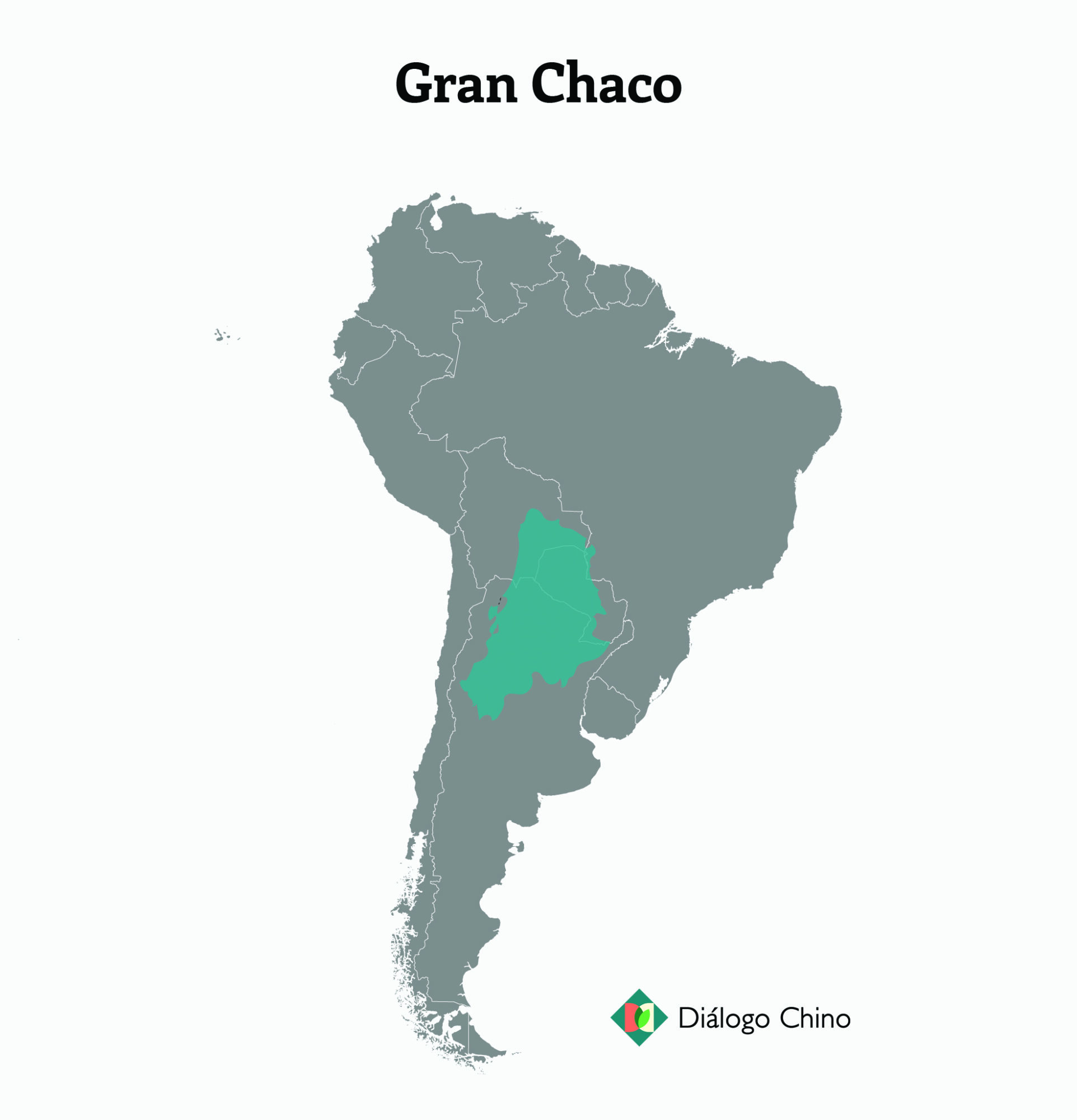
It is a forest of vital importance to the indigenous peoples who inhabit it and, like the Amazon, to the fauna and flora of the entire world, Andrea Weiler, a biologist and professor at the National University of Asunción, tells Diálogo Chino.
“It is such a peculiar ecosystem, so unique and so extreme in its biodiversity that is wonderfully adapted to extreme conditions,” says the researcher, who specialises in monitoring wildlife of the Chaco, such as jaguars and pumas.
The ecological value of the Gran Chaco includes 3,400 plant species, 500 bird species, 150 mammals, 120 reptiles and 100 amphibians. Many are threatened, such as the jaguar, the white-lipped peccary, the anteater and the tapir.
It is a peculiar ecosystem, so unique in its biodiversity that is wonderfully adapted to extreme conditions
“When you put in all these new roads, they enable much more intensive traffic. That traffic is going to bring more fragmentation of the forest, an increased [human] population, and as there are more urban settlements, there will be more conflict,” Weiler explains.
A reduction of forest area and, in turn, the prey of big cats attracts them to cows instead. Weiler warned that ranchers pay their employees between 100 and 200 dollars for each puma they hunt, and double that if it is a jaguar – hunting which is punishable with five years in prison. This is, for many in the area, more than an average monthly income.
Neither a desert nor an idyll
The Gran Chaco is not an environmental idyll, nor is it a land inhabited only by indigenous people. On the Argentine side, genetically modified soy and cotton plantations have been in place for two decades. On the Brazilian side, a few ranchers own most of the land in the ecosystem. And on both the Bolivian and Paraguayan sides, thousands of Mennonite settlers of Russian, German, Canadian and Mexican origin have settled, establishing timber extraction, cattle ranching, milk, soy and cotton industries. There are also missionaries.
Two wars have crossed this territory in less than 200 years. First, the Paraguayan or Triple Alliance War (1864-1870), in which Brazil and Argentina destroyed, occupied and cut up Paraguay. To meet the victors’ demands, Paraguay then sold the “state” lands of the Chaco on the international stock exchange, privatising forests that were ancestral indigenous territory. Later, the Chaco War (1932-1935) between Paraguay and Bolivia, which was specifically over territory in the biome, saw the deaths of over 60,000 Bolivians and more than 30,000 Paraguayans.
In the aftermath, the indigenous peoples of the region – besieged, many of them conscripted or imprisoned – continued to see their land divided up without their consent.
Today, Picanerai is one of the main indigenous political actors in the Chaco. He speaks Ayoreo, Spanish and can hold his own in Guaraní and Portuguese. On his broad shoulders, he carries the responsibility of negotiating with the Paraguayan state to prevent the destruction of the communal lands and forests where his relatives live.
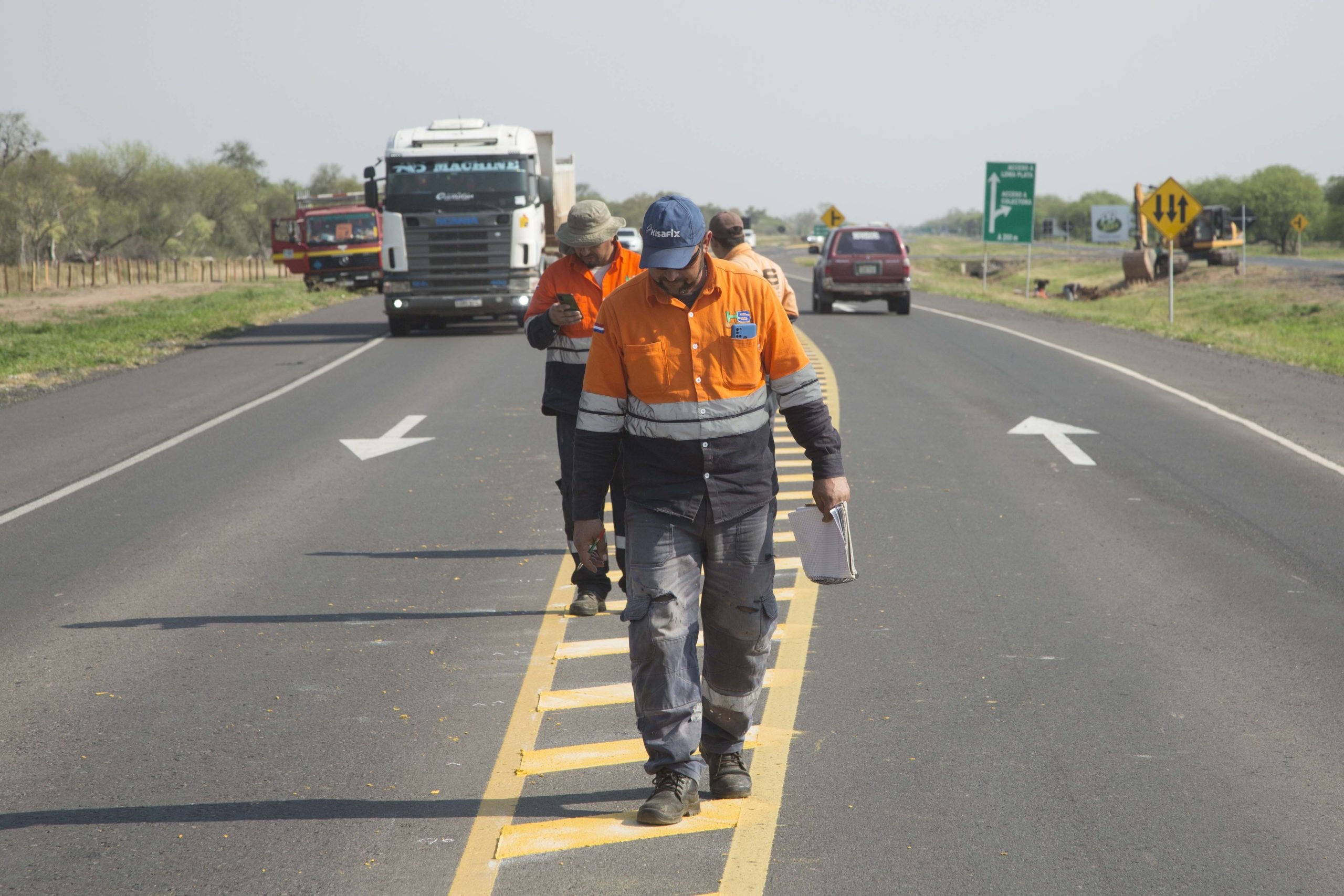
Every fortnight, Picanerai makes the 500-kilometre journey between his community and Asunción, a city known by some as the “Gateway to the Chaco”, as the capital city closest to the biome. In 2015, when I made my first trip with him, this journey took about ten hours; now that most of the route is asphalt, it takes just six.
If he and other leaders do not maintain a presence and pressure on the government, their lands are in even greater danger. Illegal logging, poachers, drug trafficking, missionaries and corrupt public officials are among their main threats.
“What used to be jaguar tracks are now marks left by bulldozers. Our brothers only want us to save the forest,” says Tagüide’s father Porai Picanerai, in Ayoreo language, as he carves a rosewood tortoise in his house in Chaidí.
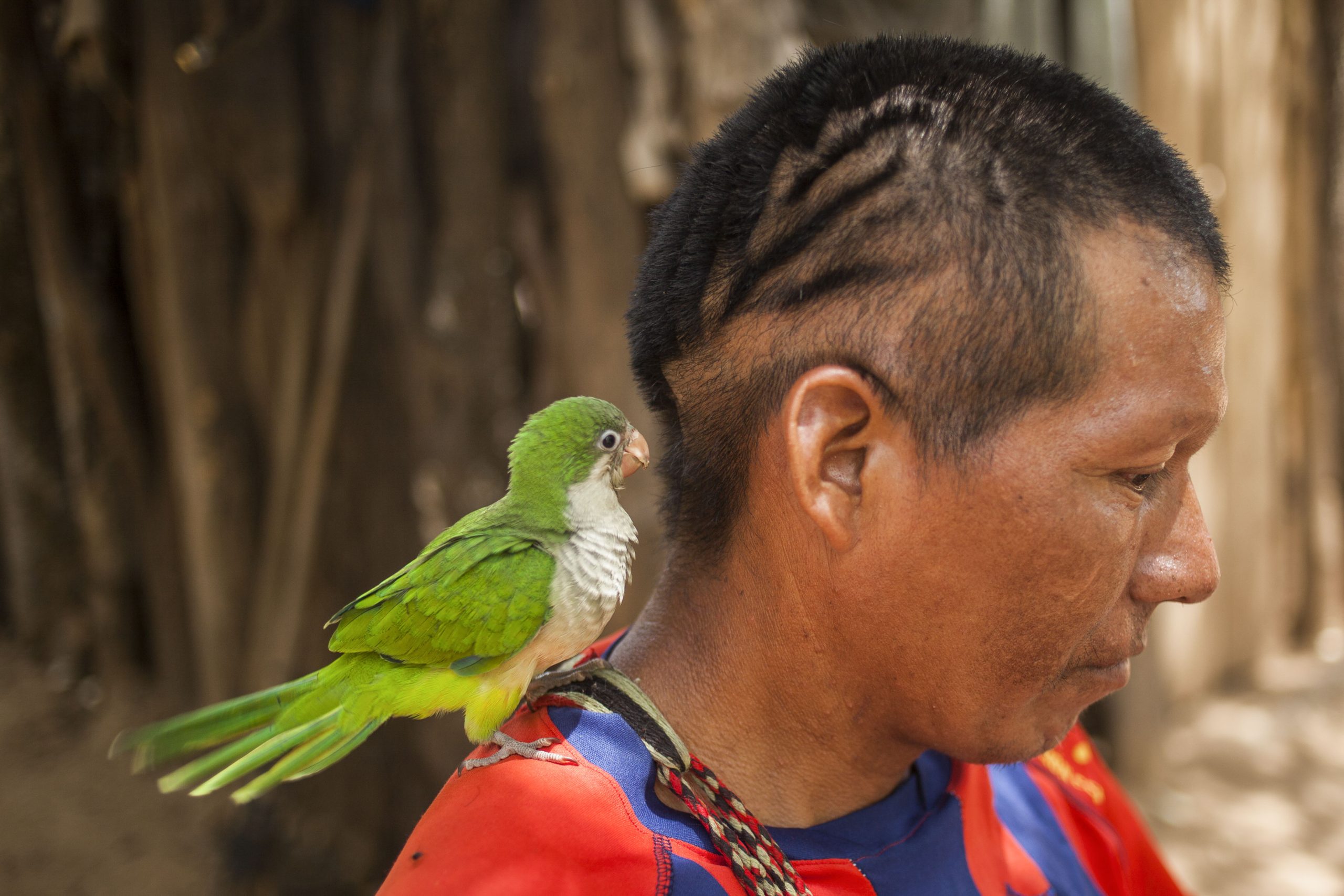
Since 2004, the year of the most recent contact with those Ayoreo in voluntary isolation, no further Ayoreo have left the forest. But during the last 30 years, some 7,000 were forced out of the forest. In most cases, they were forced by Ethnos360, which led to clashes and deaths, according to accounts from the Picanerai family and the British NGO Survival.
The new Bioceanic Corridor crosses some of the Ayoreo communities on the edges of the forest, such as those in Carmelo Peralta. Located on the banks of the Paraguay River, the village sits right where the bridge to Brazil is set to pass through. The bridge alone has cost the Paraguayan government US$103 million, on top of the US$445 million in asphalt and concrete for the new road.
Paraguayan pride, Mennonite Chaco
“This bridge and this Bioceanic route will allow Paraguay to be a strategic ally to competitive production in the region and in the world.” This is what Paraguayan president Mario Abdo Benítez said in December last year, on a visit to Carmelo Peralta to announce the start of construction on the bridge.
From there, the new route traces a straight line across Paraguay that connects the Brazilian state of Mato Grosso with the province of Salta in Argentina. Paraguay’s minister of public works, Arnoldo Wiens, told Diálogo Chino that the route will be of great use and could bring more resources to his country: “The state of Mato Grosso alone produces four times more grain than the entire republic of Paraguay. If a quarter of that production uses this corridor, it is already the same volume as Paraguay.”
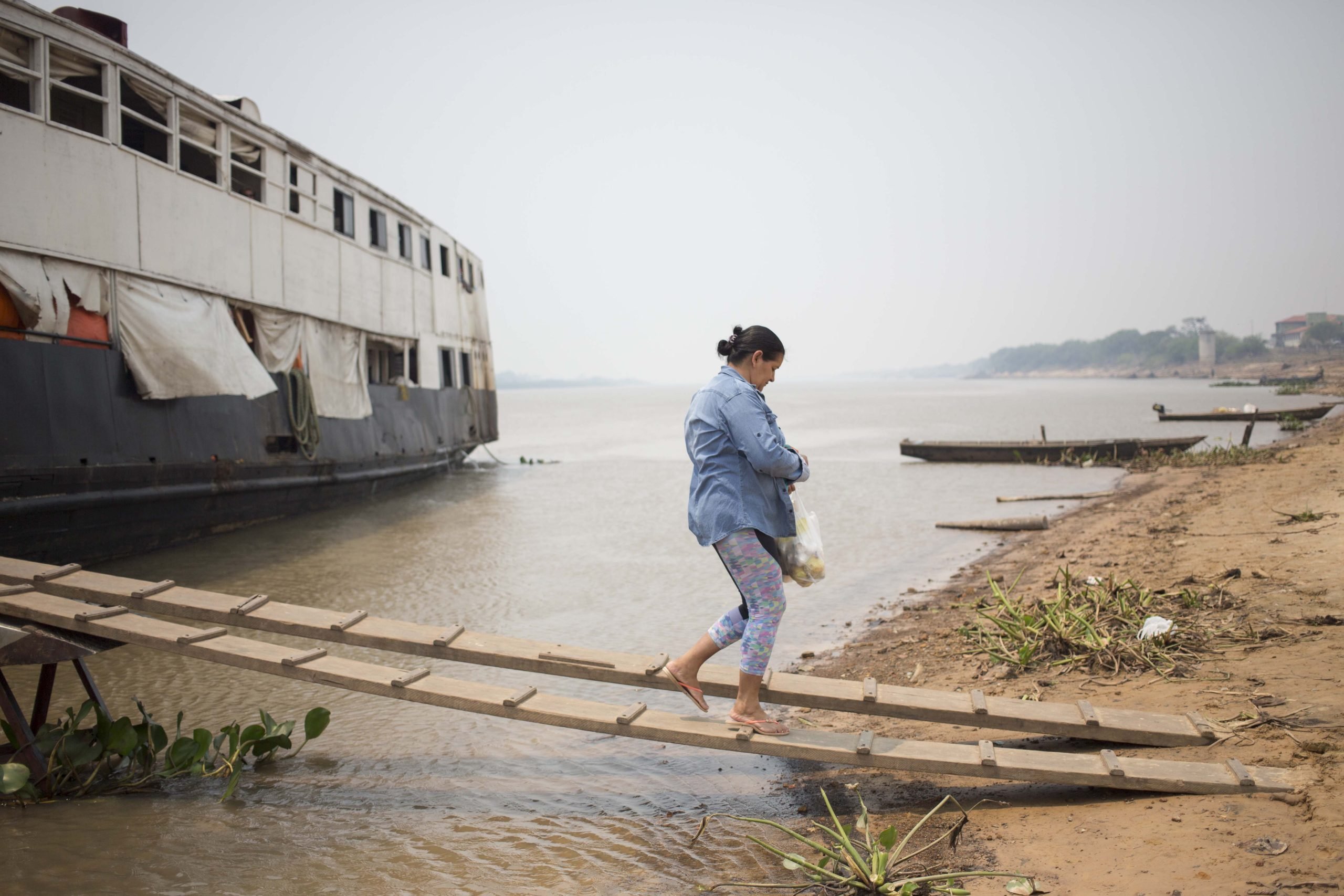
The new road has brought asphalt to the department of Alto Paraguay, a region that had no surfaced roads until road works began in 2019.
A 2020 report by Earthsight showed how Brazilian cattle ranching companies were illegally deforesting portions of the Ayoreo Totobiegosode reserve. The NGO notes in its investigation that leather from the area has been used by European companies such as BMW, produced by Cooperativa Chortitzer, a large cattle ranching company owned by the Mennonite community of Loma Plata, where the first section of the Bioceanic Corridor ends.
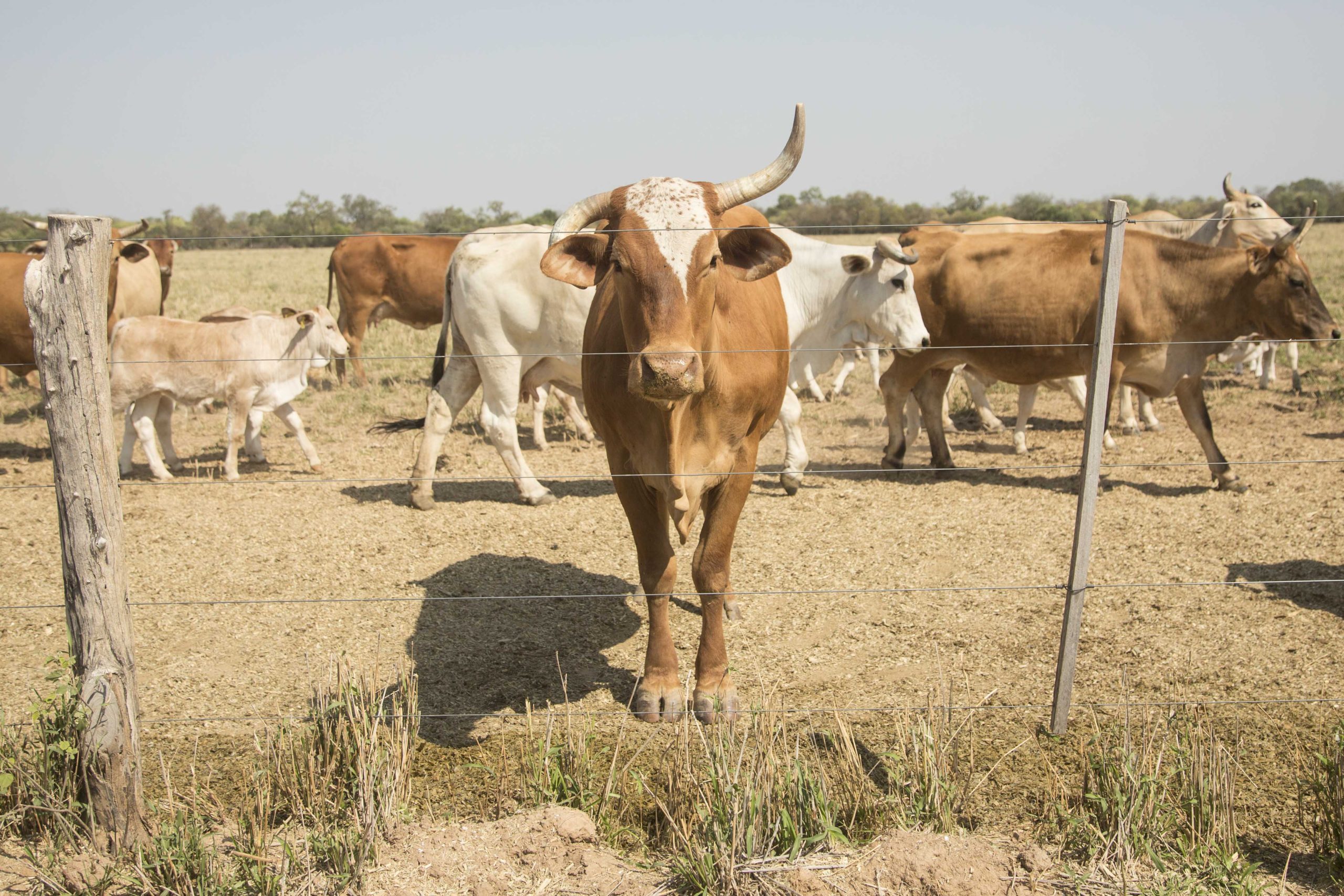
Loma Plata is, together with two other Mennonite towns, Filadelfia and Neuland, the heart of the Paraguayan Chaco – an area that is mainly Mennonite, with communities having built up cattle and dairy empires. More or less orthodox communities of these European peoples, many of whom fled from Russia and Germany, have settled throughout the Americas since the 1930s, rarely mixing with the native population.
Berthold Penner is 32 years old, of German and Paraguayan nationality. His paternal grandparents, like him, were born in the Chaco, but his maternal grandmother came from Germany, fleeing from World War II. He grew up on a cooperative farm.
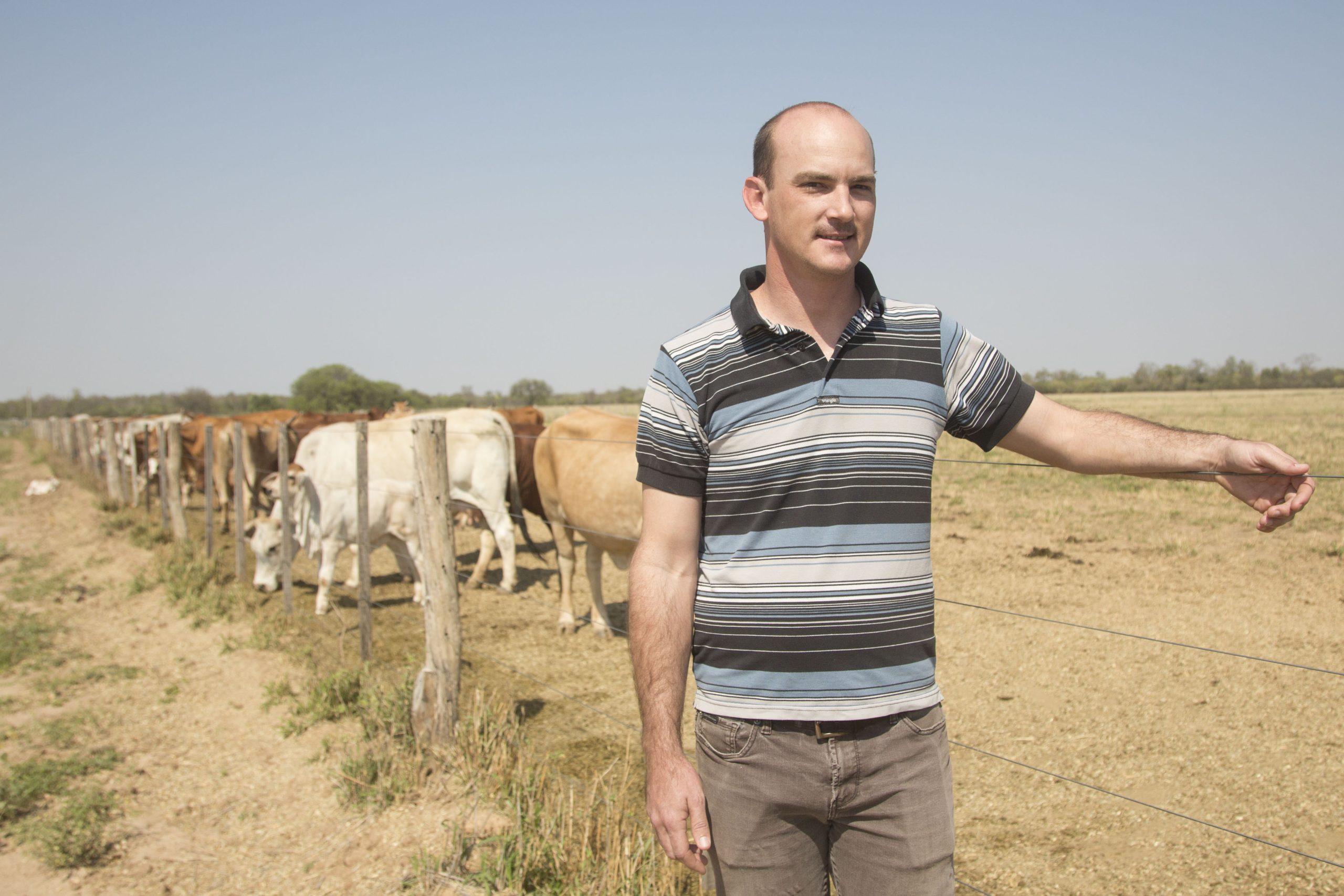
Berthold studied agricultural management and today teaches dozens of Paraguayan and Mennonite students in the same area he grew up in, instructing how to make the school’s 68 cows provide more and better milk – reaching as much as 1,600 litres per day. He also teaches how to reduce stress for the 880 cows dedicated to meat production, how to feed them in a balanced way, and even how to help them procreate. He enthusiastically recounts the details of his trade, while one of the students drives a brand new tractor delivering feed to the animals.
Berthold leans against the wire fence and offers his opinion on the Bioceanic Corridor. “Agriculture is going to increase and all the produce will be able to be moved out in a timely manner,” he tells me. “The Bioceanic road brings us closer to our neighbours. It is 232 kilometres less of dirt road, on which rains would stop you in your tracks. It reduces the risk and increases the speed and safety of the product reaching its destination.”
The effects of the new Bioceanic route are also being felt on neighbouring roads, such as the Trans-Chaco, which crosses Paraguay from north to south and connects Asunción with Santa Cruz in Bolivia – two cities united by their links to the Chaco, despite the geographical distance that separates them. The Paraguayan government is also working to widen this road from two to four lanes, and upgrading it in remote areas that previously looked more like the surface of the moon.
A land of extremes
Among indigenous communities, however, all this development is not being met with the same enthusiasm as among other inhabitants of the Chaco. Fifteen kilometres from Loma Plata is El Estribo, a community of 7,000 people, half of them children, of the indigenous Enxet people. They are also defenders of the forest, but are more urbanised because of their proximity to Mennonite towns.
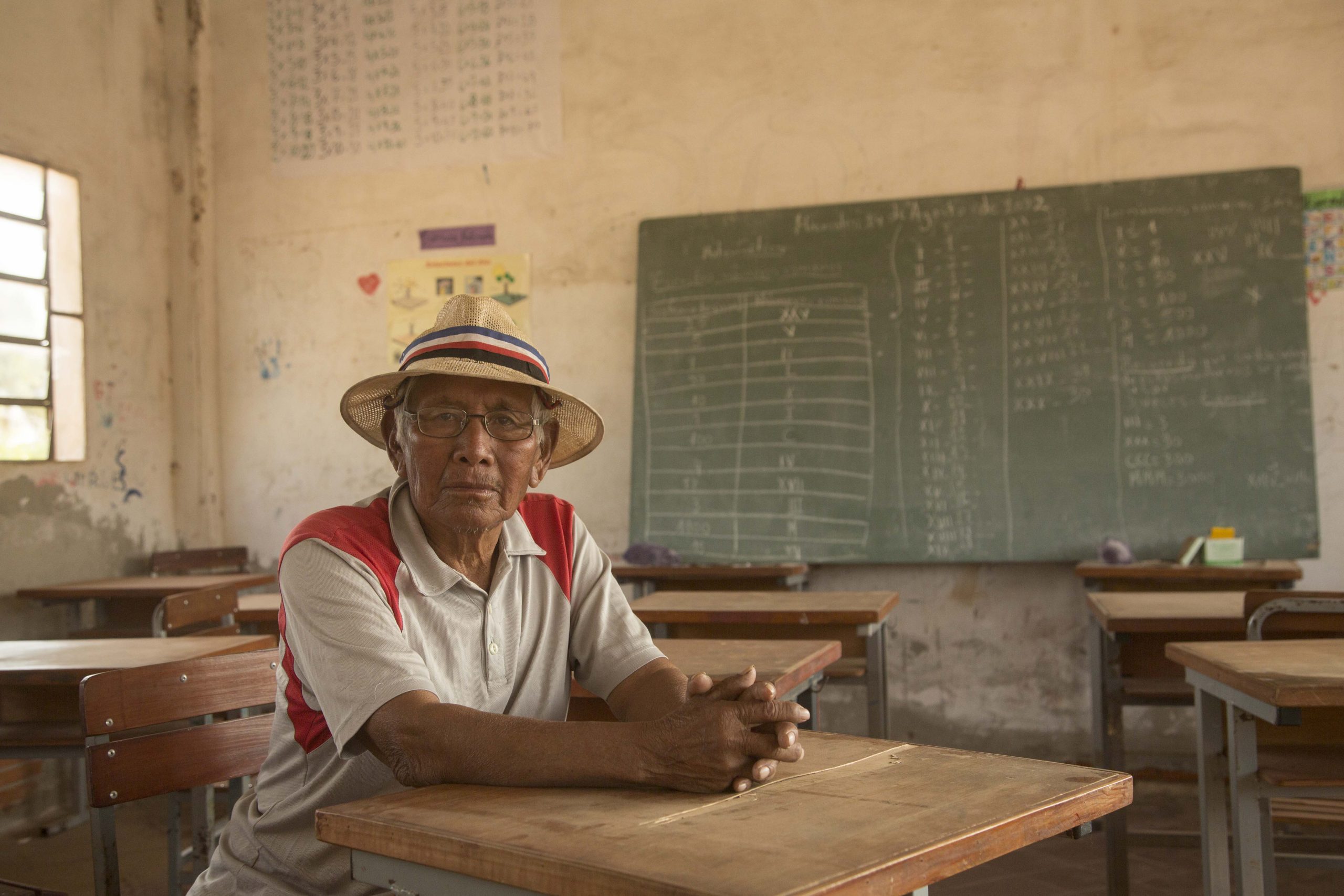
Benigno Rojas is 79 years old, and seems to have more energy than the children playing pikivóley – a mixture of volleyball and football – in front of the village school.
A leader and a defender, Benigno walks with determination as he caresses a green leaf of an algarrobo tree. He shows me the lavish samu’u, the swollen-trunked floss silk trees also known as palo borracho, or “drunken sticks”. They are everywhere, blooming and offering their seeds to the wind in their cotton-like fluff that covers leaves, branches and the whitish soil.
“In the Chaco, there are problems when there is drought, and when there is flooding, too,” says Benigno.

The Chaco is characterised by this extreme duality: a total absence of rain for more than four months, with even a lack of water to drink, or an excessive abundance that turns roads into swamps, making access to hospitals impossible and allowing mosquitoes to flourish. But the landscape is also changed by humans, and machines that have recently razed over 200,000 hectares of forest per year on the Paraguayan side, and 150,000 hectares per year on the Argentine side.
Another duality is economic and racial inequality. On one hand are the large cattle ranches of Paraguayan and foreign investors, as well as the German-inspired Mennonite towns, with their running water and electricity assured, with farmers on large green tractors and cattle ranchers with bank accounts and access to credit. On the other, indigenous communities survive on the bare essentials, with almost no state support to secure land titles and drinking water from tajamares, as they call the wells that collect rainwater.
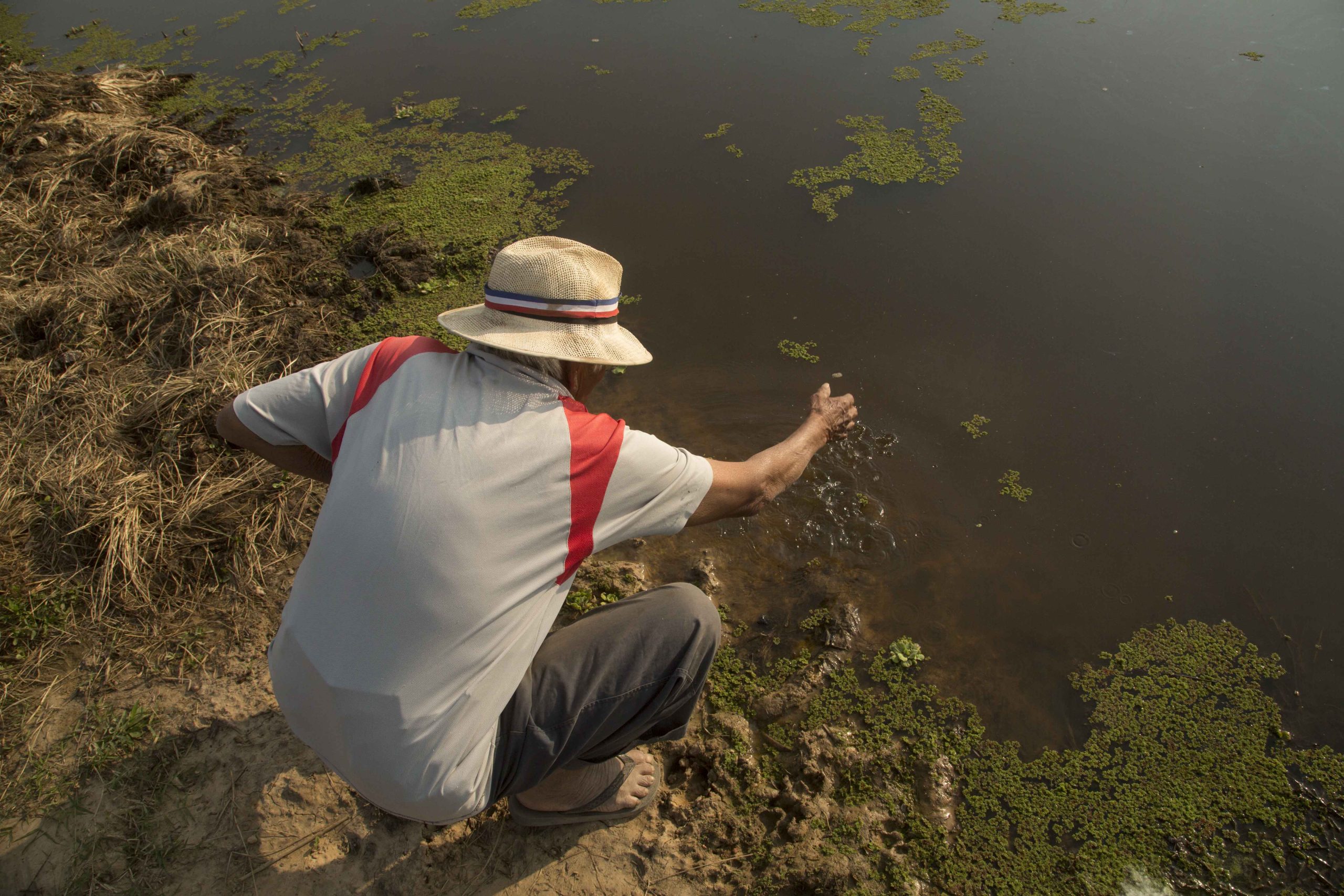
It is September 2022, and the Chaco has been hit by drought for more than five months. Fires on both the Argentine and Bolivian sides are filling the air with smoke. In El Estribo, Benigno’s community, the drinking water purchased from the state is about to run out.
In Brazil, the Chaco is a virtually unknown biome connected to the Pantanal. It has recently received renewed attention thanks to a TV soap opera, itself called “Pantanal”, which has helped raise some awareness of environmental issues in the biomes – although it will never match that of the Amazon. The devastation of the Brazilian Chaco is directly linked to the devastation of the Pantanal by the advance of the agricultural frontier in the last 40 years.
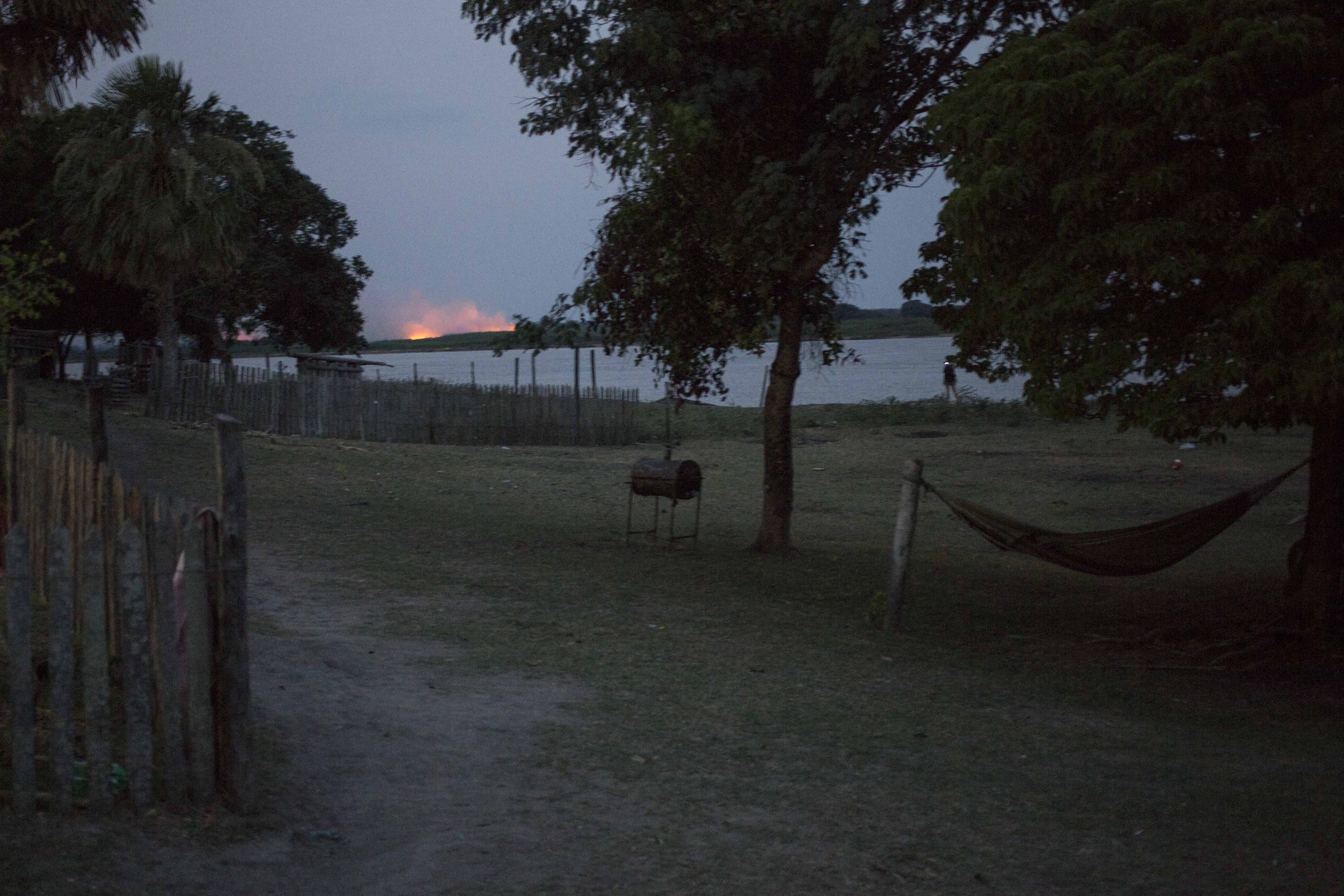
María Liz Paya, a cook and member of the Yshy indigenous people, lives in the community of Puerto Diana, 200 metres from the Paraguay River and just across the border from Brazil. She lives at the Paraguayan entrance to the Pantanal wetland, but there is hardly ever any drinking water in her house. She lives among palm trees and cacti; among caimans, floods and, lately, droughts. As she uses a bucket to fetch water from the river, water that she will later have to make drinkable with chlorine, she gazes over the water into Brazil and can see the forest burning nearby.
“It’s the ranch of a Brazilian rancher. He is burning forest to make room for cows,” says Paya. “The fire is advancing every year on the land of our ancestors. What will the future hold for our children?”
